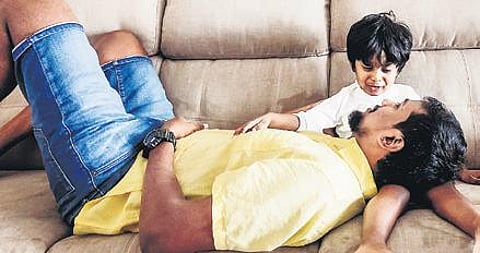

Ahmad Faras—an art director and photographer who shuttles between Aligarh and Delhi for work—would often find it difficult to convince people to play muse in his photography experiments. However, the pandemic-induced lockdown proved to be a boon for the 24-year-old photographer who managed to team up with more than 13 models from around the world, without stepping out of his room, through remote photography.
Remote photography ideally means a setup wherein the photographer and the consenting subject/s are not present in the same physical space. This practice allows artists to transcend geographical barriers by making use of technology.
From local to global
Fostering effective collaborations allows an artist to diversify their portfolio and pushes them to progress beyond limitations. Remote photography is a mode that offers shutterbugs a chance to widen their scope and partner with artists from around the globe. Faras mentions that he has been adding several international collaborations to his existing body of work by making use of the application by Shutter Studio—the app helps him connect his mobile phone in India to the subjects’ camera in their country.
South Delhi-based photographer Raqeeb Raza (28) mentions that he collaborated with Pakistani artist Asad Ali Zulfiqar for a remote photoshoot using FaceTime (Apple’s video and audio chatting platform). Despite creating a series of striking pictures, Raqeeb is of the opinion that the medium restricts artistic expression. “There is a limitation in how you can frame pictures. These technical parts really bothered me.”
Arduous yet inventive
Taking (artistic) images remotely is a time-consuming and tedious process. Firstly, the photographer needs to be familiar with the surroundings. Apart from that—in the absence of an art director—the artist may have to provide ancillary services such as selecting costumes, finalising make-up and look, etc. “I usually ask for a house tour (via video chat) to get an idea about this, and then another video call before the actual shoot to familiarise the client with the process,” shares Ghaziabad-based photographer Kriti Agarwal, adding that she helps her subjects choose clothes and jewellery to be worn during the shoot.
On the other hand, Chennai’s Sumanth Kumar mentions there’s potential in photographing remotely—the photographer has been doing this since 2015—given the flexibility of the medium. Kumar points out that remote photography can be helpful for restaurants serving Indian food, abroad. “For such restaurants, getting photographs clicked for promotional purposes can end up being expensive. It is cheaper (for outlets) when done remotely and beneficial for remote photographers in India,” he concludes.
An experience in itself
While the process of photographing remotely may seem tiresome and a hassle, clients and subjects state otherwise. Accessory designer Paulami Saha worked with Agarwal to get a candid shoot done when she was travelling to Bhimtal. Delineating why she decided to choose remote ove normal means, the Kalkaji resident says, “ It was during COVID-19 and I really wanted to document this trip. It felt suitable to conduct the shoot remotely and I had a great experience. There was not much hassle, we had the most baci equipment and the result was great,” affirming that she won’t hesitate trying the same again.
Snehal Kalpana, actor and model from Mumbai, worked with Faras on a series called Chaukhat—she was photographed with her mother—that explores the relationship of a mother and a daughter, mentions that the process is rather seamless but an understanding must be there between the model, the photographer, and the art director. “The shoot is usually an hour or more but the main task happens before that. Figuring out the setup, the light, and the props to be used. It is the preparation that takes most of the time,” mentions Kalpana who has been a part of many similar remote photoshoots.
The process can also feel liberating. “I think I will be more comfortable in a virtual photoshoot since the person photographing me is not in the same space. There’s more scope for me to open up and not get intimidated by someone else’s presence,” says Aditi Agarwal (21) from East Delhi.
What lies ahead?
Photographers agree that remote photography cannot replace normal photography however stay conflicted if the medium will evolve any further.
“It is a great medium to create experimental works and play around with existing techniques.”
Manan Rai (25), a professional photographer from Noida
“I feel I have been able to do justice to my concepts through FaceTime photoshoots, something I have found difficult to do otherwise.
Ahmad Faras
I look forward to doing more remote photoshoots. Despite some issues, the medium has a lot of potential.
Sumanth Kumar
Remote photography will definitely surface again if there's a lockdown. Otherwise, it will be on the periphery.
Raqeeb Raza
There are endless possibilities with remote photography. In the future, we can see advancement.
Kriti Agarwal
Photographer Kriti Agarwal mentions that the process of shooting remotely is safe and a few applications such as the one by Shutter Studio offers end-to-end encryption and does, in no way, violate the subject’s privacy. However, discretion is advised. One must be extremely cautious while signing up for remote photoshoots—such a session mandates the consent of the subject—and verify the credentials of the photographer before collaborating with them.